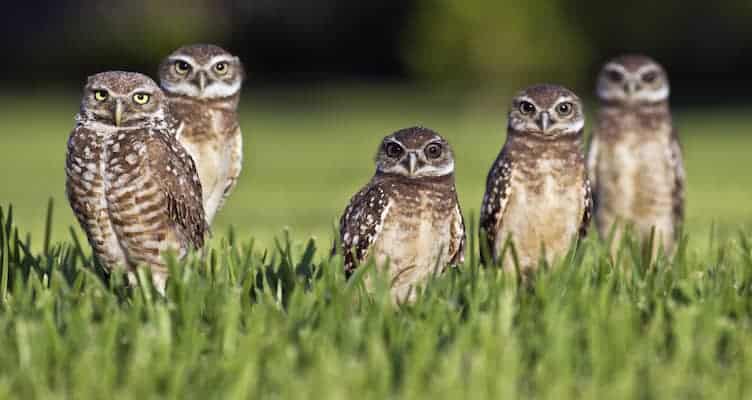
Picture an owl. Perhaps you’re thinking of a wise-looking bird that nests in tree cavities and hoots into the night air. Or maybe you’ve conjured up an image of the snowy white, mail-delivering wizard companion from the Harry Potter series. In the muggle world of Boulder County, however, we have an owl that couldn’t be farther from either of those descriptions. To find it, look neither in a tree nor in a Harry Potter book. Instead, look to the ground.
Burrowing owls are small (adults are only 10 inches tall) and they’re active during the day. But what truly sets them apart from other owls is where they nest. As the name suggests, burrowing owls lay their eggs in an underground burrow. They are clever birds, and instead of wasting energy on digging their own hole, they simply take over one that’s been abandoned by prairie dogs.
Like other owls, they feed on insects, small mammals, and occasionally birds or reptiles. They rarely prey on their prairie dog neighbors, though they have been known to squabble with them over territory.
Burrowing owls used to be plentiful in the plains of Colorado, but in the last 20 years their numbers have declined dramatically. This is due to extensive habitat loss. As our wide-open plains give way to development, the burrowing owl’s nesting sites have disappeared as well.
In 2014, there were only two known pairs of burrowing owls in Boulder. This is the lowest number of local nesting pairs since 2007. Open Space and Mountain Parks imposes seasonal closures from March 15 – October 31 to protect their nesting areas.
To catch a glimpse of these unique owls, head over to the Coalton Trail where a pair has recently hunkered down to nest. The area north of the trail is closed for their protection, but the trail itself remains open. Bring binoculars, as the owls are likely to be some distance from the trail.
What can we do to protect our burrowing owls? Heeding trail closures is paramount to providing them with ample, undisturbed space for nesting. Preserving our prairie dog colonies and other wide-open spaces will ensure that they have nesting sites for years to come.
Photo Credit: travelwayoflife‘s photostream on Flickr via Creative Commons license




